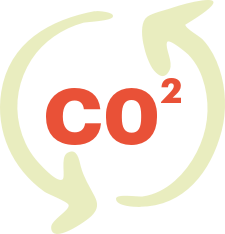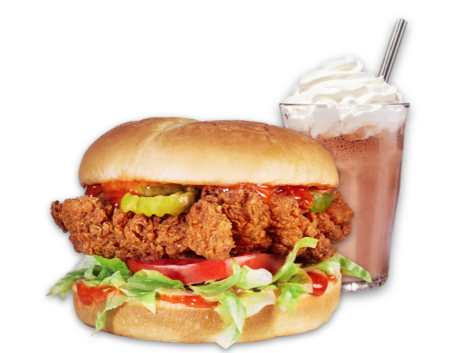FAQs
Do you have questions about Mt. Joy? We’ve got answers! If you’ve got additional questions, please drop us a line at village@mtjoy.com

Mt. Joy’s mission is rooted in the idea that food has the power to change the world which is why we came to be.
Food has power to inspire change. Mt. Joy aims to set a new standard for transparency in the restaurant industry, and to build this vision nationally.
Food has power to help cure the climate. Mt. Joy aims to use regenerative agriculture to build a profitable, sustainable, and ethical business model that inspires global adoption of climate-smart practices.
Food has power to embrace humanity. Mt. Joy seeks to do this by making craveable, fast-casual food that is healing to the environment, humane to animals, is compassionate to all workers in the supply chain, and accessible to every consumer.




Our approach to menu design is rooted in our core values and the principles of regenerative farming, which we believe is a vital component of a sustainable food system. While it may seem unusual for a sustainability-focused restaurant to focus on chicken instead of plant-based options, we’d like to provide some context for our choices:

Regenerative Farming:
Regenerative farming aims to enhance the health of the land year after year by mimicking natural ecosystems. In this context, both plants and animals play important roles. Farms practicing regenerative agriculture often integrate both to create a harmonious and sustainable farm ecology. This approach allows for the efficient cycling of nutrients, as animal impact can become a valuable resource for plant growth and restoring degraded cropland.
Improved Animal Husbandry:
Early on we identified modern conventional chicken production practices as an area desperately in need of innovation. Of the dozens of fast food and fast casual restaurants out there, can you believe that every single one of them is sourcing chickens from confinement operations and using industrial genetics that result in poor animal welfare? Mt. Joy chickens spend a minimum of 1,000 hours living on pastures, are moved to fresh pasture every single day, and are a slower-growing breed of chicken with improved welfare outcomes. Balanced Menu: Our menu reflects our commitment to regenerative practices. By offering a combination of plant-based and animal-sourced ingredients, we aim to showcase the benefits of sustainable, holistic agriculture.
Raising Awareness:
A significant percentage of the population continues to consume meat and animal products. By including options that appeal to a wide range of dietary preferences, including those who may not follow a fully plant-based diet, we can reach a broader audience and raise awareness about sustainable alternatives to industrial farming. Our goal is to encourage more individuals to make informed choices about their food consumption and support regenerative farming practices.
Further Reading: Regenerative Agriculture 101

A preliminary study from David Montgomery and Anne Biklé, co-authors of What Your Food Ate, found that food grown under regenerative practices contained, on average, more magnesium, calcium, potassium and zinc; more vitamins, including B1, B12, C, E and K than food grown on conventional farms. The study also notes the benefit of regenerative agriculture for meat production — “a comparison of the unsaturated fatty acid profile of beef and pork raised on one of the regenerative farms to a regional health-promoting brand and conventional meat from local supermarkets, found higher levels of omega-3 fats and a more health-beneficial ratio of omega-6 to omega-3 fats.”

Regenerative has come to mean a lot of different things. Regarding agriculture, the farming practices our farmers use need to improve the quality of their soil. When you increase the quality of the soil, the soil in turn, can sequester carbon from the atmosphere. So, healthy soil translates into a healthier planet.
While the word regenerative was initially only relevant to agriculture, it has come to have a broader meaning in recent months. At Mt. Joy, we take regenerative to mean leaving the resource we use better off than when we found it. If a practice improves the health of the thing involved in the practice, it can be called regenerative since it is regenerating health instead of eroding health. This definition can be applied to the impact of practices on humans and animals and the more traditional application to the soil or the environment.
For a full list of our allergens, please visit this page.
We are dedicated to transparency and accountability when it comes to our carbon footprint and overall sustainability, and we recognize carbon as one of many metrics we ultimately would like to report on. While we do not have specific data available at this moment as we are still in the very early stages of development, we are actively working on several initiatives to measure and publish our performance about greenhouse gas emissions:

Carbon Emissions Reduction:
We are committed to minimizing our carbon emissions across all operations. This includes optimizing our supply chain, reducing energy consumption, and adopting environmentally friendly practices in our kitchen and restaurant facilities.
Carbon Sequestration:
Besides emission reduction, we are deeply concerned about carbon removal from the atmosphere. Starting in 2024, we will initiate a comprehensive soil sampling program in collaboration with our partner farms. This program aims to quantify the positive impact of our operations on agricultural soils in our bioregion. This includes assessing the soil health and carbon sequestration potential on farms where our chickens are raised, farms that produce feed for our chickens, and farms responsible for growing the wheat used in our breading and, eventually our buns as well. We plan to expand this approach to other key ingredients in the coming years.
Transparency and Reporting:
We understand the critical importance of transparency in our sustainability efforts. As we collect data and insights from our soil sampling program, we will regularly update our customers and the public about our progress towards becoming carbon neutral or even carbon negative. This information will be made available on our website and through other communication channels.
Further Reading: Ecosystem Impacts and Productive Capacity of a Multi-species Pastured Livestock System

Ingredient Sourcing:
Our long-term vision is to source all our ingredients from regenerative contexts. While we have made significant strides in establishing local supply chains for sustainably raised chicken, we acknowledge that regenerative supply chains for all our ingredients are not yet fully established. However, we are committed to continually exploring and expanding these supply chains. This includes our efforts in sourcing dairy products, potatoes, and other ingredients used in our menu items from regenerative sources.
Waste Reduction:
We are actively seeking ways to minimize waste in our operations. This includes efforts to reduce food waste in our kitchen, improve packaging sustainability, and implement recycling and composting programs. We are even developing a chicken broth product to upcycle the nutritional value of leftover bones.
Transportation and Supply Chain:
We recognize the environmental impact of transportation and logistics in our supply chain. For this reason, we are sourcing ingredients locally whenever possible.
Customer Education:
We believe that informed consumers can drive positive change. We are working on enhancing our customer education initiatives to raise awareness about sustainable food choices and the impact of our business on the environment.
Transparency:
We are committed to transparency and will continue to provide regular updates on our sustainability initiatives, progress, and challenges. We value feedback from our customers and the wider community as it helps us refine our sustainability efforts.
If you have any feedback, suggestions or specific areas of interest within our sustainability efforts, please feel free to reach out to us at village@mtjoy.com. We value your input in our ongoing journey toward a more regenerative future.
We take the issue of greenwashing very seriously. We understand that making unsubstantiated or misleading environmental claims can erode trust with our customers and harm the credibility of the sustainability movement as a whole. Here’s how we ensure that our marketing materials are free from greenwashing:

Scientific Validity:
All claims we make about our sustainability practices and their positive impact on the environment are grounded in scientific research and peer-reviewed literature. We invest time and resources in thoroughly researching and verifying the environmental benefits of our sourcing, operations, and supply chain practices. We are committed to providing accurate and credible information to our customers.
Transparency:
We believe in being transparent about our sustainability efforts. We aim to highlight our achievements but also acknowledge our challenges and areas where we are actively working to improve. In time, we will provide customers with access to data and information that support our claims, ensuring they can make informed choices. (Stay tuned for an unprecedented level of visibility into the farming practices on our partner farms!)
Continuous Improvement:
We view our sustainability journey as an ongoing process of improvement. We actively seek feedback from our customers and the wider community to hold ourselves accountable and make necessary adjustments. If we identify areas where we have fallen short or need to enhance our practices, we take prompt action to address them.






